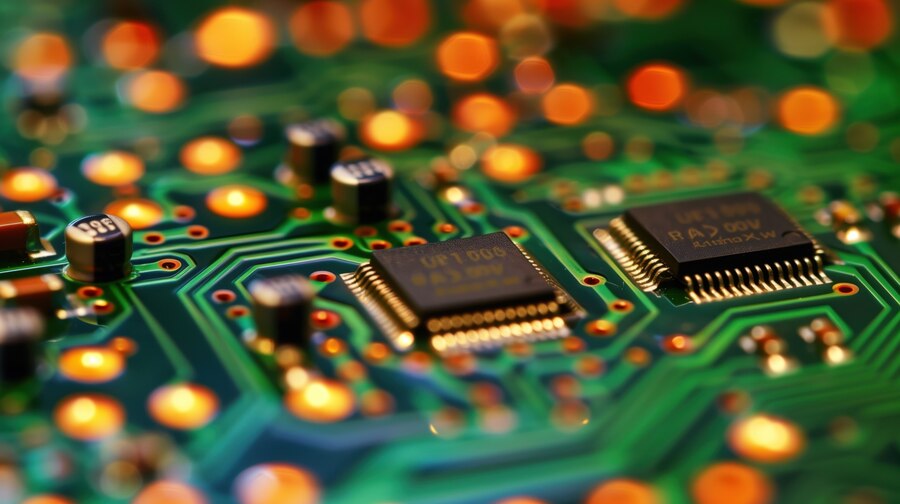
Introduction to Micron Technology
In today’s fast-paced digital world, the significance of cutting-edge technology is undeniable. At the heart of this innovation lies Micron Technology, In today’s fast-paced digital world, the significance of cutting-edge technology is undeniable. At the heart of this innovation lies Micron Technology, a key player in memory and storage solutions that empower everything from smartphones to cloud computing. With an increasing demand for high-performance electronics, understanding Micron Technology becomes essential not just for tech enthusiasts but also for businesses and consumers alike.
This blog post will take you on a journey through the fascinating landscape of Micron Technology—its history, its application across various industries, and insights into its future trends. Buckle up as we explore how this powerhouse shapes our modern electronic experiences!
The History and Evolution of Micron Technology
Micron Technology has a rich history that dates back to 1978. Founded in Boise, Idaho, it began as a small semiconductor company focused on memory products.
In its early years, Micron faced stiff competition from larger firms. However, innovation and strategic partnerships allowed the company to carve out its niche. By the late 1980s, Micron had made significant strides in dynamic random-access memory (DRAM) technology.
As demand for digital storage grew rapidly during the 1990s and early 2000s, Micron expanded its product offerings. The introduction of NAND flash memory marked a pivotal point for the company. This advancement opened doors to various applications beyond traditional computing.
The evolution continued with breakthroughs in packaging technologies and advancements like 3D XPoint memory. Each step solidified Micron’s position as a key player in the global tech landscape while adapting to ever-changing market needs.
How Micron Technology is Used in Different Industries
Micron technology plays a pivotal role across various industries, enhancing performance and efficiency in numerous applications. In the realm of consumer electronics, it powers smartphones and laptops, enabling faster processing speeds and improved storage capabilities.
The automotive sector also benefits significantly from this technology. Advanced driver-assistance systems (ADAS) rely on high-speed memory to process data quickly, ensuring safer driving experiences.
Healthcare is another area where micron technology shines. Medical devices utilize its components for real-time data analysis and patient monitoring, leading to better outcomes in critical situations.
In the world of cloud computing, businesses depend on reliable memory solutions for seamless data management. Micron’s products support massive workloads while maintaining energy efficiency.
The gaming industry has embraced micron technology as well. Gamers enjoy smoother graphics and faster load times thanks to innovative DRAM and NAND solutions that elevate their experience.
Types of Micron Technology: DRAM, NAND, and 3D XPoint
Micron Technology offers a diverse range of memory solutions, each tailored for specific needs. DRAM (Dynamic Random Access Memory) is one of the most common types. It’s widely used in computers and mobile devices due to its speed and efficiency. This type of memory stores data temporarily, allowing quick access during operations.
NAND flash memory stands out for its non-volatile nature, meaning it retains information even when powered off. It’s pivotal in smartphones, USB drives, and SSDs, providing ample storage capacity while maintaining performance.
3D XPoint technology represents a significant leap forward. Unlike traditional memories that sit flat on silicon wafers, 3D XPoint stacks layers vertically to enhance density and speed. This innovative approach allows for faster data processing with lower latency—ideal for high-performance computing applications.
Each type serves distinct functions but collectively enhances how we interact with modern electronics daily.
Advantages and Challenges of Using Micron Technology
Micron technology offers several advantages that make it essential in modern electronics. For starters, its high data transfer speeds enable devices to function more efficiently. This boosts performance across various applications, from smartphones to cloud computing.
Another benefit is the durability of Micron’s products. They are designed to withstand rigorous conditions while maintaining reliability. This resilience enhances user experience and extends product lifespan.
However, challenges exist as well. The rapid pace of technological advancements creates a constant need for innovation. Companies must invest heavily in research and development to stay competitive.
Additionally, fluctuating raw material prices can impact production costs. Manufacturers face pressure to keep prices down while meeting growing demand for advanced memory solutions.
Balancing these pros and cons requires strategic planning within the industry, highlighting both opportunities and obstacles associated with micron technology.
Trends in the Future of Micron Technology
The future of micron technology is poised for remarkable advancements. As the demand for faster, more efficient data processing increases, innovations in semiconductor design will play a key role.
Emerging technologies such as artificial intelligence and machine learning require robust memory solutions. Micron technology is meeting this need through enhanced DRAM and NAND performance.
Sustainability also drives change. Manufacturers are focusing on eco-friendly production methods to reduce waste and energy consumption. This shift not only benefits the environment but can lower costs in the long run.
Additionally, 3D XPoint technology stands out with its unique ability to blend speed and persistence. This advancement opens new doors for applications requiring rapid access to large datasets.
As industries evolve, so too will micron technology’s contributions. Keeping an eye on these trends will be essential for anyone invested in electronics or computing.
Conclusion
Micron Technology plays a crucial role in shaping the modern electronics landscape. Its innovations have transformed how we store and process data, leading to enhanced performance across a variety of devices.
The company has come a long way since its inception, evolving alongside advancements in technology. Today, it serves multiple industries from consumer electronics to automotive applications, proving that flexibility and adaptability are vital.
As we delve deeper into distinct types like DRAM, NAND, and 3D XPoint memory technologies, it’s clear that each offers unique benefits tailored for specific needs. However, along with advantages such as increased speed and capacity comes challenges related to cost and manufacturing complexities.
Looking ahead, trends indicate an exciting future for Micron Technology. With ongoing research focusing on improving efficiency and sustainability within memory solutions, there’s much more innovation on the horizon.
Understanding Micron Technology provides insights not just into its products but also into the overall trajectory of technological advancement itself—a journey that’s far from over.




